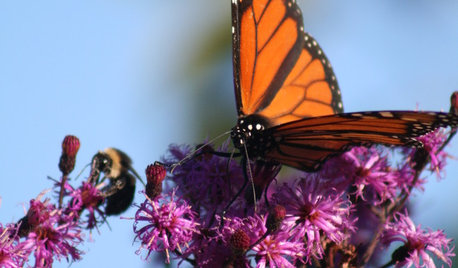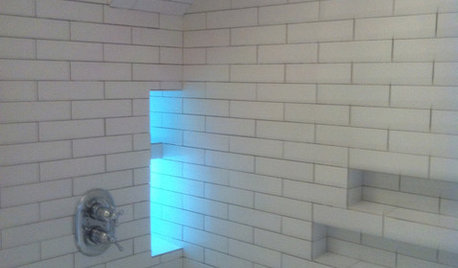Help with getting my soil right in order to plant azaleas
wilsocn
12 years ago
Related Stories

FARM YOUR YARDHow to Get Good Soil for Your Edible Garden
The nutrients in your soil feed the plants that feed you. Here are tips on getting it right — just in time for planting season
Full Story
LANDSCAPE DESIGNHow to Shape a Rain Garden and Create the Right Soil for It
Learn how to grade, lay out and amend the soil in your rain garden to support your plants
Full Story
GARDENING GUIDESGreat Design Plant: Try Blue Bells for Blooms in Dry Soil
This shrub’s violet-blue flowers and silvery foliage brighten low-water gardens all year long
Full Story
GARDENING GUIDESHouzz TV: Make a Worm Bin for Rich Soil and Happy Plants
A worm-powered compost bin that can fit under a sink turns food scraps into a powerful amendment for your garden. Here’s how to make one
Full Story
GARDENING GUIDESGrow a Beautiful Garden in Alkaline Soil
Got alkaline soil? Learn how to manage it and the many beautiful plants that will thrive in this ‘sweet’ soil
Full Story
GARDENING GUIDES10 Solutions for Soggy Soil
If a too-wet garden is raining on your parade, try these water-loving plants and other ideas for handling all of that H2O
Full Story
GARDENING GUIDESGreat Design Plant: Ironweed Fills Tall Garden Orders
Height, a slender form and a taste for wet soil make this native perfect for rain garden borders — and beneficial insects love it
Full Story
GARDENING GUIDESGet on a Composting Kick (Hello, Free Fertilizer!)
Quit shelling out for pricey substitutes that aren’t even as good. Here’s how to give your soil the best while lightening your trash load
Full Story
BATHROOM DESIGN10 Top Tips for Getting Bathroom Tile Right
Good planning is essential for bathroom tile that's set properly and works with the rest of your renovation. These tips help you do it right
Full Story
GARDENING GUIDESHave Acidic Soil in Your Yard? Learn to Love Gardening Anyway
Look to acid-loving plants, like conifers and rhododendrons, to help your low-pH garden thrive
Full Story





mainegrower
wilsocnOriginal Author
Related Professionals
Parole Landscape Architects & Landscape Designers · Richmond Heights Landscape Architects & Landscape Designers · Waunakee Landscape Architects & Landscape Designers · Wheeling Landscape Architects & Landscape Designers · Beverly Hills Landscape Contractors · Canton Landscape Contractors · Dickinson Landscape Contractors · Fuquay-Varina Landscape Contractors · Laguna Hills Landscape Contractors · Little Ferry Landscape Contractors · Painesville Landscape Contractors · Rockville Landscape Contractors · Tinton Falls Landscape Contractors · Merrifield Landscape Contractors · North Hills Landscape Contractorsmainegrower
wilsocnOriginal Author
wilsocnOriginal Author
rhizo_1 (North AL) zone 7
wilsocnOriginal Author
mainegrower
wilsocnOriginal Author
Carolyn246
morz8 - Washington Coast